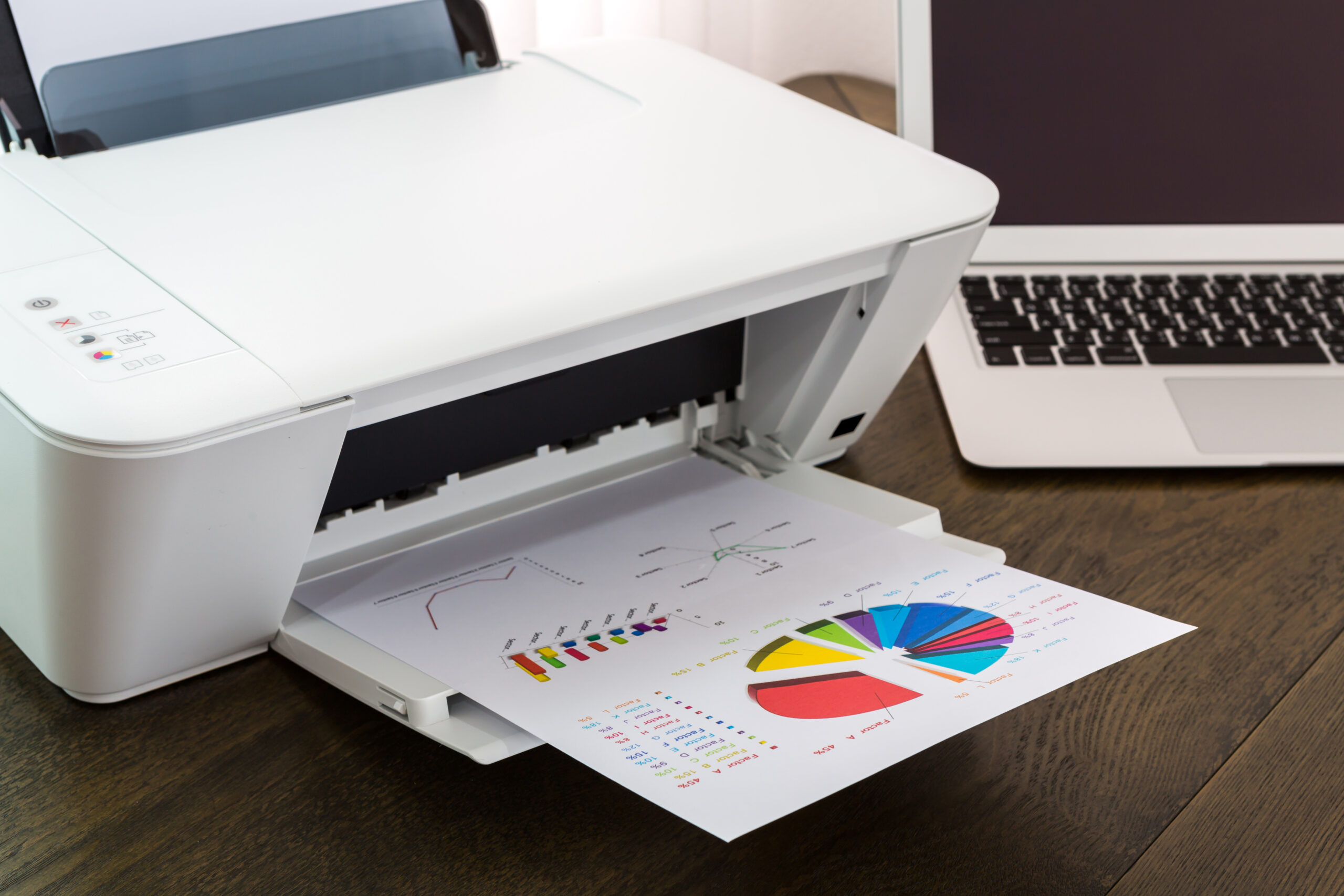When purchasing a new copier for your office, there are two important questions to consider. The first question is which model will best suit your needs and usage. If you work with a service provider like us, your dedicated account executive will assess your needs and recommend the best options. The second question is whether to lease or buy the printer, and the answer to this requires careful consideration of various factors to make an informed decision. As your technology solutions expert, we’ve laid out the differences between leasing and buying a printer to help you understand the pros and cons of each.
Option 1: Buying a Printer
Buying a printer involves outright purchasing the equipment, either through cash payment or other financing options. Once purchased, you fully own the machine.
Benefits of Buying a Printer
1. Ownership
Buying a printer means it’s yours from day one. You own the asset and have the flexibility to use it as you see fit without any contractual obligations to a lessor. You do not have to worry about making monthly payments, and once you’re finished using the equipment, you get to decide what you want to do with it: keep it or sell it.
2. Easy process
It is a simple process that involves less paperwork and effort than signing a lease agreement. You do not have to get your credit involved, negotiate lease terms, or worry about getting stuck with unfavorable conditions.
3. No contractual obligations:
Some equipment leases require you to maintain equipment according to the leasing company’s specifications, which could mean extra maintenance expenses. Additionally, when you outright purchase your printer, you have the flexibility to relocate it anytime without having to update the address with the leasing company every time.
4. Cost savings in the long run
While purchasing a printer may require a larger initial investment, it can be more cost-effective than leasing over time. This is because, with a single payment, you can avoid paying interest and other fees that you might have to pay throughout a lease agreement.
Downside of Buying a Printer
1. Upfront cost
One of the major drawbacks of buying equipment is the high initial expense. This can be especially difficult for small businesses or startups that may have cash flow issues. Instead, the funds for buying equipment upfront could be allocated to other projects that can help your business grow.
2. Outdated technology
Printers, like other electronic devices, can become obsolete relatively quickly as new models with enhanced features and capabilities are introduced to the market. Upgrading outdated equipment can be more difficult when you own it instead of leasing it. When you purchase a unit, you are committed to using it until it reaches the end of its lifecycle or until you decide to invest in a newer model. This can be a challenge when you want to take advantage of newer features and technology to improve your workflow.
Option 2: Leasing a Printer
When you decide to lease a printer, you enter into a contractual agreement with a leasing company or vendor to rent the equipment for a specific period, which usually ranges from one to five years. During this time, you pay a monthly fee for using the printer. At the end of the lease term, you can either upgrade to a newer model or keep the existing equipment.
Benefits of Leasing a Printer
1. Lower initial investment
When you lease your printer, you do not have to pay the entire cost upfront, allowing you to allocate your money to other business investments. This option is particularly useful for small businesses or businesses that want to maintain their cash flow.
2. Upgrade opportunities
Just as with your car, lease agreements often offer the option to upgrade to a newer model at the end of your lease term. This helps with staying current with the latest technology without having to purchase new equipment outright.
3. Added flexibility
Leasing gives you more flexibility when choosing the right model for your business needs without worrying about it costing too much upfront. For example, you could lease a more expensive model to handle high-volume printing that would otherwise be unaffordable outright. Additionally, you can upgrade your equipment as your business needs evolve. Once your lease contract ends, you can simply return the equipment or upgrade it without the hassle of selling or keeping it beyond its usefulness.
Downside of Leasing a Printer
1. Higher long-term costs
While leasing may have lower upfront costs, over the long term, monthly lease payments can add up to more than the cost of purchasing a printer outright. This is due to interest and other additional fees that get factored into a lease agreement.
2. Contractual obligations
Lease agreements are binding contracts that require you to make payments on a unit for the duration of the agreement, regardless of usage. This means that you cannot sell the unit and must continue making payments even if you decide to no longer use it. Furthermore, breaking the contract can be a costly and complicated process if your business circumstances change during the agreement period.
3. No ownership
When you lease a printer, you technically don’t own it unless you decide to buy it at the end of the lease term. Until then, the equipment will remain as the property of the leasing company, unlike if you were to buy a printer, in which case you’d own it after purchase.
Which is Better for Your Business?
Choosing between leasing and buying a printer depends on your business’s financial situation, operational needs, and technological requirements. Leasing might be the way to go if you need to conserve cash, prefer predictable monthly expenses, and like keeping up with the latest technology. On the other hand, buying might be more suitable if you prefer ownership and have the capital to invest upfront, aiming for lower long-term costs.
Ultimately, it’s essential to carefully evaluate your options and consider both the short-term and long-term impacts of your decision on your business’s financial health and operational efficiency. If you need assistance with making purchasing decisions for your office technology, contact us or call us at 407-490-0509. We offer expert advice and a large selection of printers so you can choose the best equipment for your business needs.



